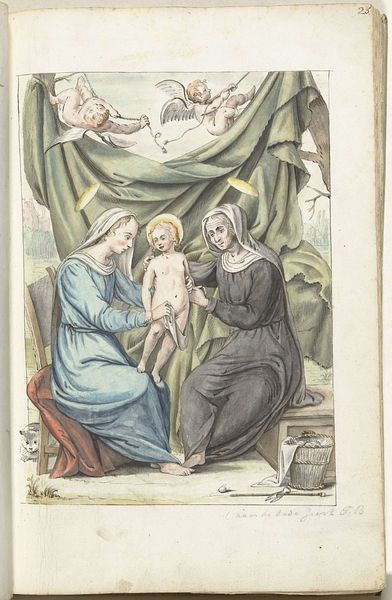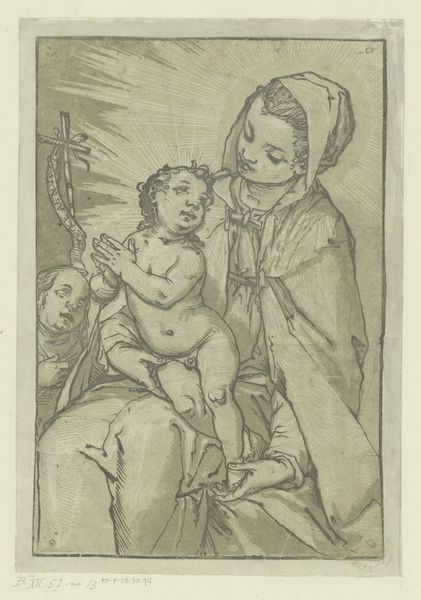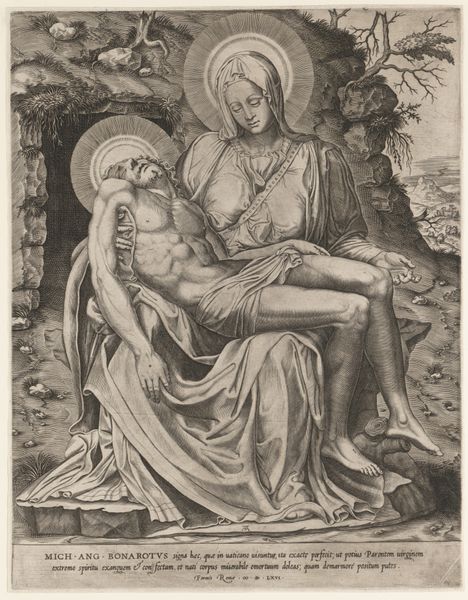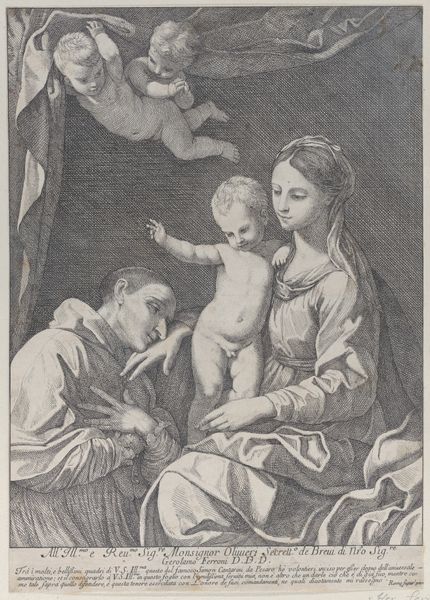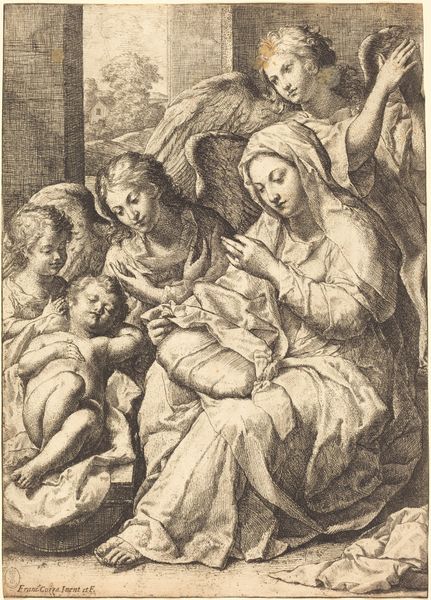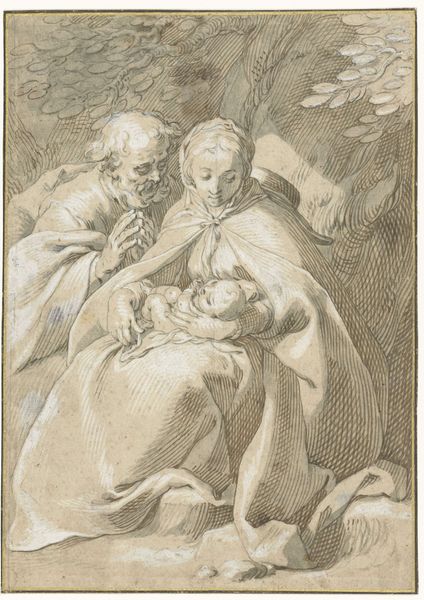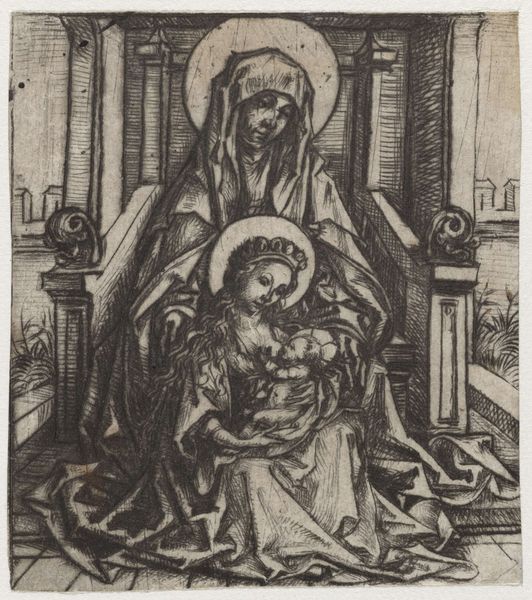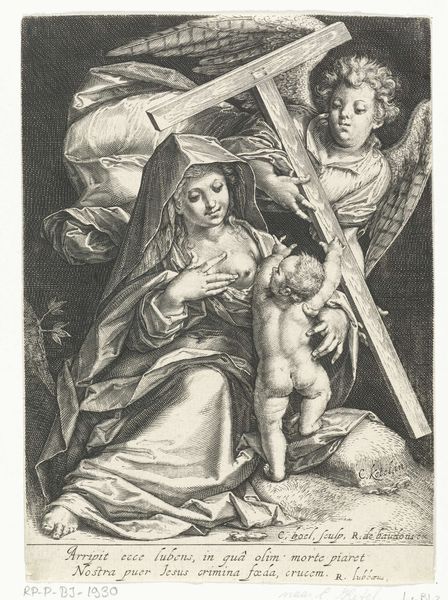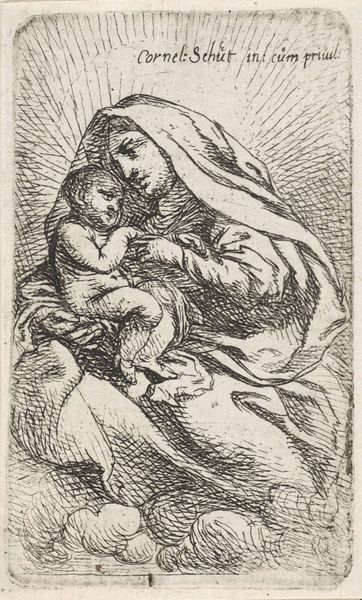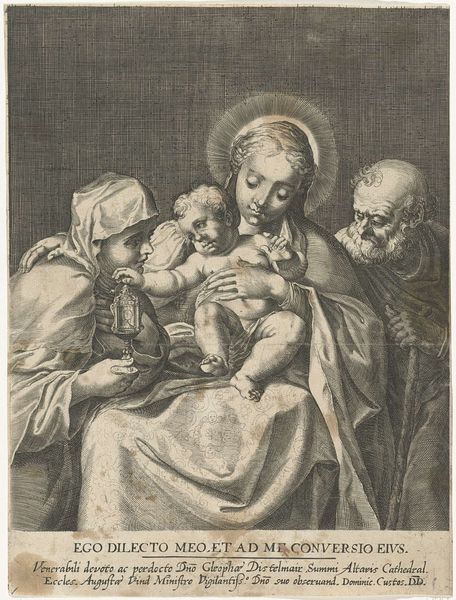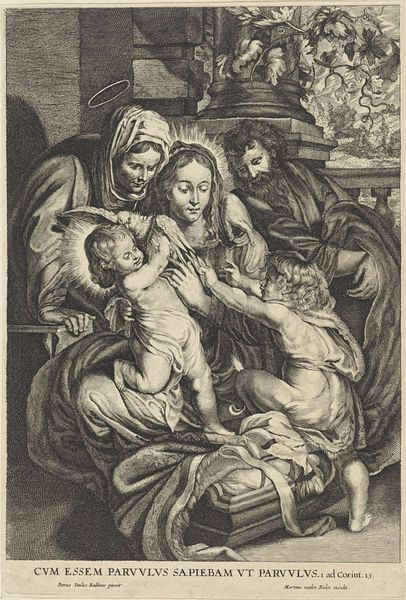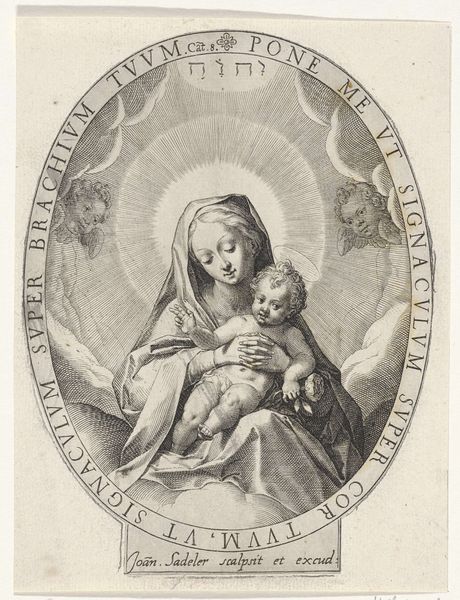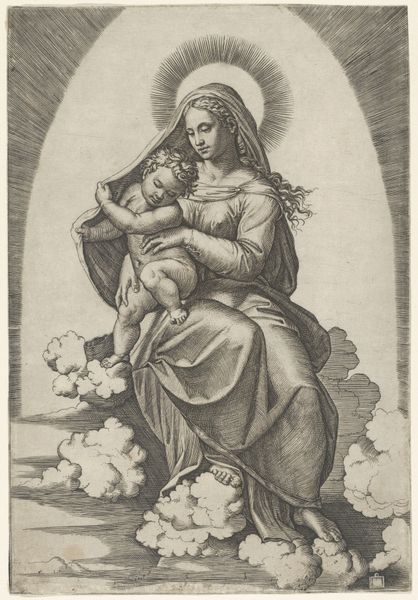
drawing, paper, ink
#
portrait
#
drawing
#
baroque
#
pencil sketch
#
figuration
#
paper
#
ink
#
portrait drawing
#
genre-painting
#
history-painting
Dimensions: height 248 mm, width 165 mm
Copyright: Rijks Museum: Open Domain
Curator: This is "The Virgin Mary with Child and Saint Anne" by Gerard ter Borch, created in 1616. It's an ink and pencil drawing on paper currently held at the Rijksmuseum. What strikes you initially about this piece? Editor: Well, first off, there's an intriguing sense of tenderness conveyed through such restrained lines. A rather intimate portrayal of this sacred trio. It looks domestic and vulnerable in this setting, rather than the opulent images of the Madonna you often see from this time. Curator: Indeed. Ter Borch uses hatching and delicate washes to establish form, paying close attention to the fall of light across the figures’ drapery. See how the artist used diagonals to add depth to this complex group. Note also the sharp focus of his forms, a technique often associated with northern art and engravings. Editor: The symbol of the veil, suspended by those cheeky putti, speaks volumes. It is there but pulled up almost as in a theater, presenting us with this view of a perfect matriarchal bloodline: the Child, Mother, and Grandmother. Curator: It also introduces a verticality that counters the more static figures below. The artist creates that relationship through his deliberate use of implied line and shape. Did you note how all figures are given the round, divine shape of halos hovering above each of their heads? The lines are barely visible and were sketched with speed. Editor: Those small halos add a wonderful symbolic layer. Beyond the central figures, there's a basket and sewing equipment, evoking themes of domesticity and female labor and wisdom. Also note the inclusion of the family cat sitting patiently, a known symbol of independence, healing, seeing in the dark. Curator: Exactly. These secondary elements function not as mere background but rather enhance the intimate moment. This really enriches our reading of its formal complexity and intention. Editor: It all makes one consider, doesn’t it, the evolving portrayal of women across centuries, still seeking relatable yet elevated representation? Curator: Ter Borch, indeed, leaves us contemplating his nuanced choices within his visual language and historical context.
Comments
No comments
Be the first to comment and join the conversation on the ultimate creative platform.
